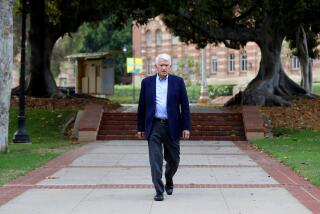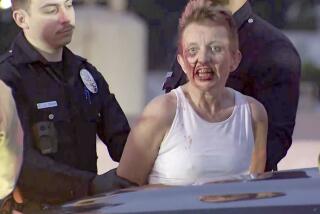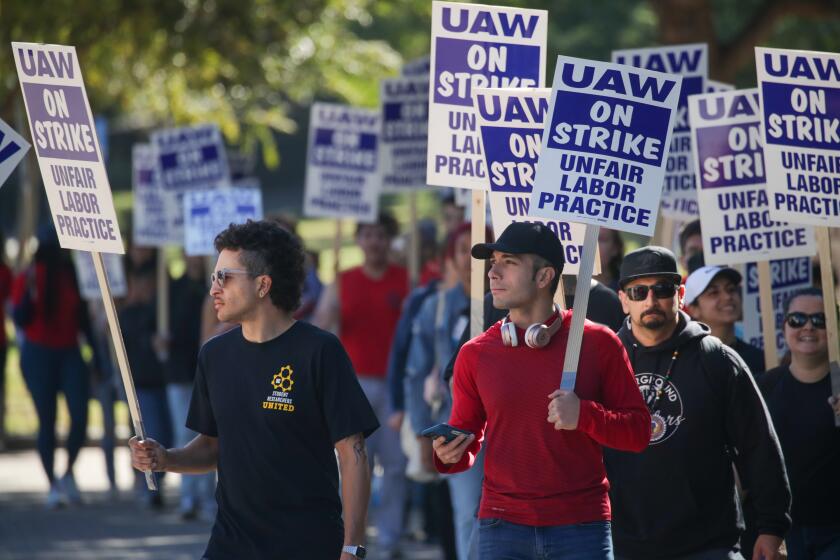Teacher Honored for Pioneer Program for Troubled Youth
Billy, working at a table in a Bellflower special education classroom, takes cards from one pile, puts them into envelopes and forms another stack. Kevin, across from him, marks a task sheet every time he reminds Billy to get back to work.
“He’s, like, packaging stuff,” Kevin said. “It’s, like, to get him ready for work. He likes to fool around so I have to tell him all the time, ‘Work, Billy, work.’ ”
Kevin, at 15, is four years younger than Billy. The protege is autistic. The mentor is on probation.
They are working together as part of the curriculum at Rosewood Community Education Center, one of the county’s storefront schools for troubled youths. Pioneered in 1988 by teacher Cedric Anderson, the nationally recognized program was showcased Wednesday for the 1996 California teachers of the year. Anderson is one of the five teachers honored .
“Everybody felt that taking juvenile delinquents with assaultive or aggressive or combative behavior in their pasts and putting them with special ed kids who are vulnerable would be like putting the wolves with the lambs and the lambs would be eaten up,” he said.
“But instead, the little lambs have made lambs of the wolves,” Anderson said.
This year, after a history of detentions and suspensions, Kevin was expelled from his Paramount school district. His transgressions ranged from cutting class to carrying a gun. Now he attends the one-room Rosewood schoolhouse, across the mini-mall from a Blockbuster Video, and spends two hours a day tutoring special education students down the road at Lynn Pace School. All 32 students at Rosewood help them study, walk, eat, swim and groom.
Kevin is wrestling with Alex and reaches in for a piece of prime tickling territory. Alex appears pleased. A year ago, the autistic Alex was “like a heat-seeking missile,” prone to unexpected explosions, said his special education teacher, Larry Davis. He needed a full-time behavior aide.
“They have someone their own age to look up to and in turn, the troubled kids know they have to set a good example, so they do. It builds self-esteem and sensitivity to other people for both. They look forward to seeing each other,” said Davis, who opposed the program when it was initiated. Now he calls it “one of the best things that’s ever happened.”
At any one time there are about 5,000 probation students in county Juvenile Court schools, although about 55,000 come through during the year, according to the Los Angeles County Office of Education. Some statistics support the success of Anderson’s program: six months after leaving Rosewood, 62% are still in district schools or working; the other 38%, he says, are “incarcerated, unemployed or dropouts.”
“Probation is no guarantee that a student will stay in school. Rehabilitating--fighting the crime and violence by our youth today--requires more than boot camp,” Anderson said. “It requires a human touch.”
More to Read
Start your day right
Sign up for Essential California for news, features and recommendations from the L.A. Times and beyond in your inbox six days a week.
You may occasionally receive promotional content from the Los Angeles Times.






